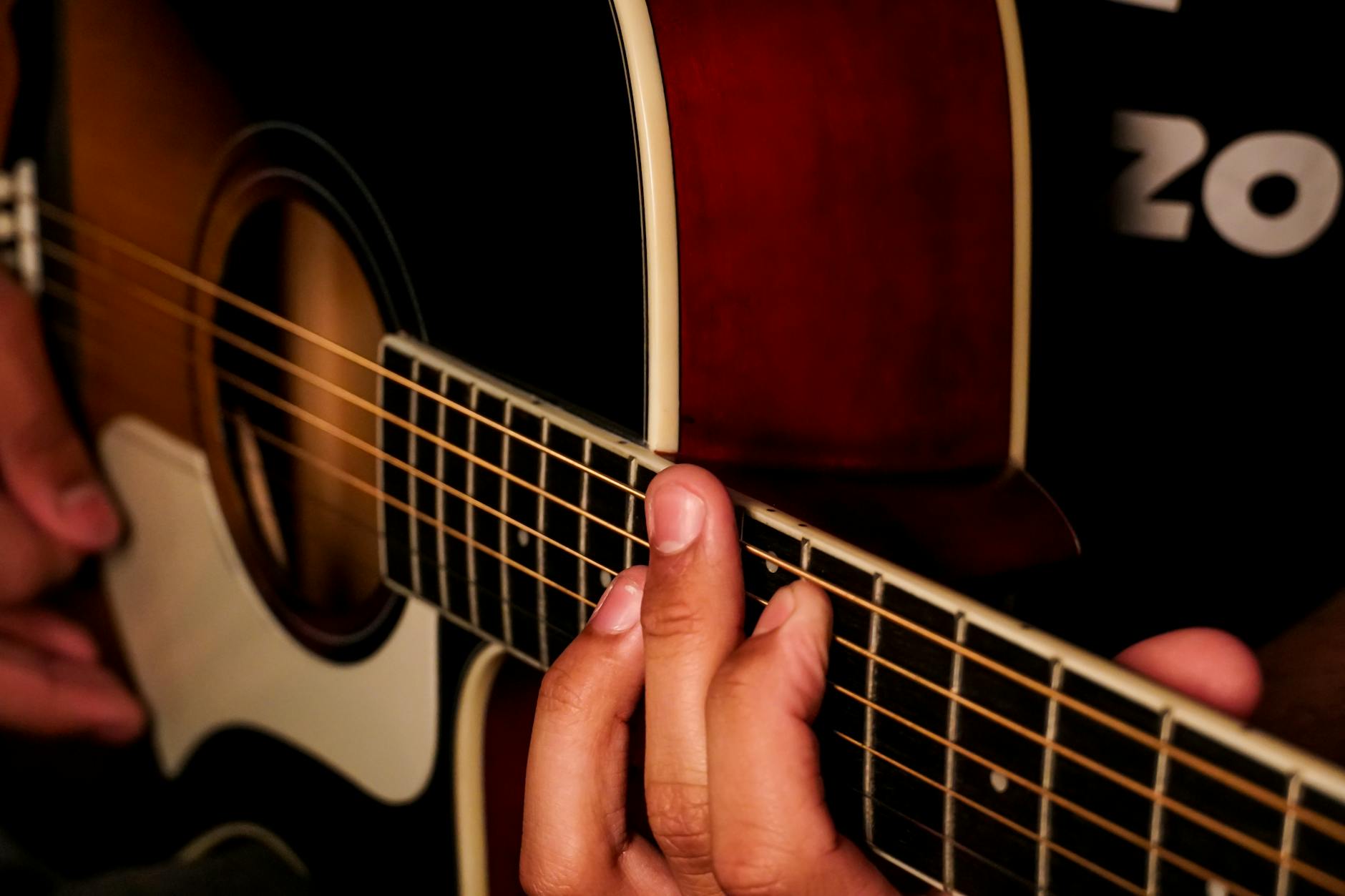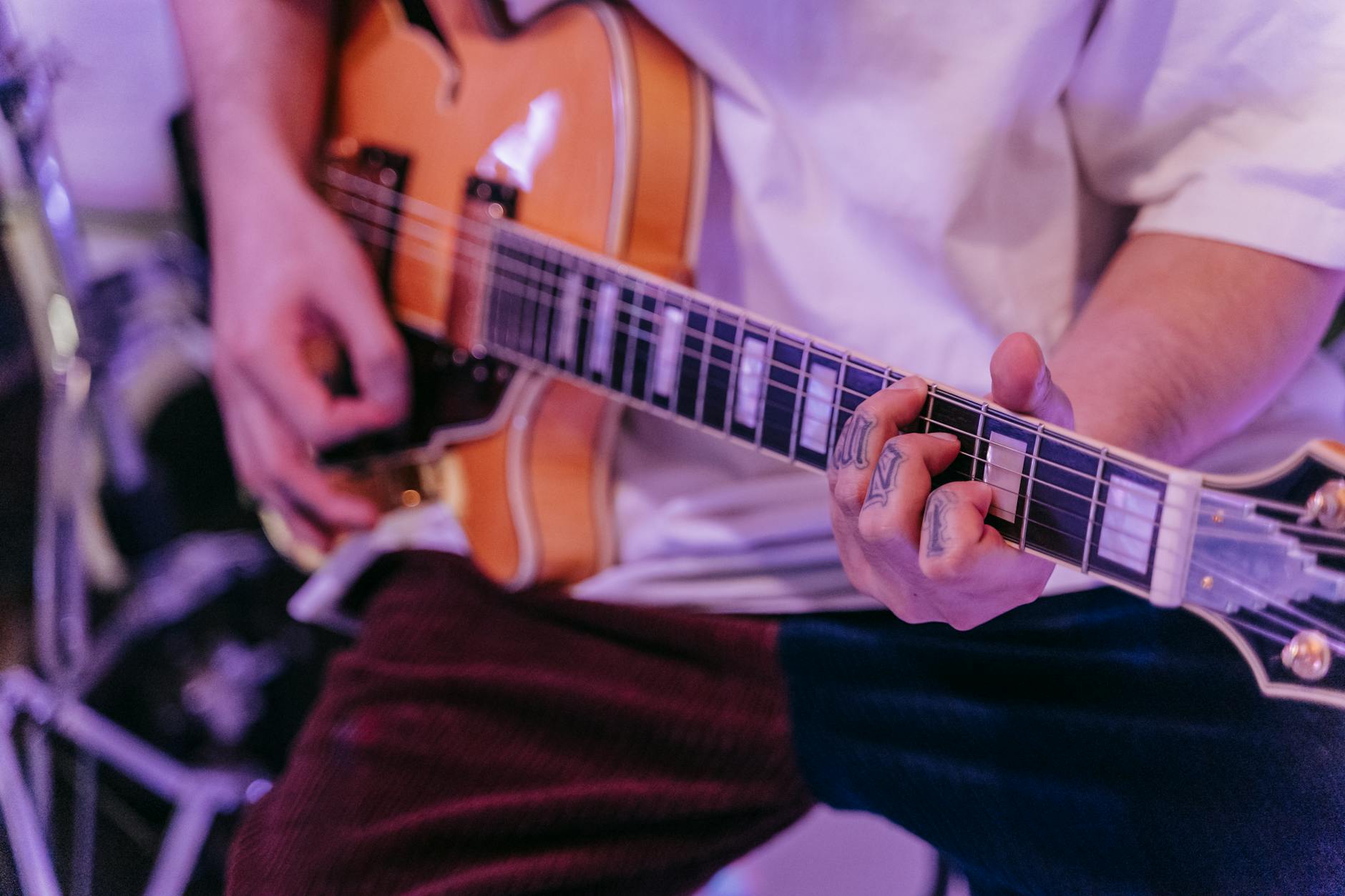5 Affordable Ergonomic Guitar Mods That Reduce Hand Pain
Discover ergonomic guitar mods for hand pain. Easy, budget DIY fixes to play pain-free. Improve comfort—get back to enjoying guitar today!

Ever felt tingling or ache creep into your fingers just minutes into a practice session? For too many guitarists, hand pain turns music into frustration. The price tag on so-called ergonomic guitars puts them out of reach for most players. And that's a shame because the right ergonomic guitar mods—done on a budget—can make a massive difference in comfort. Simple adjustments to your strings, strap, or body setup can turn a painful playing experience into hours of pain-free creativity. This guide cuts through the noise, focusing on low-cost, do-it-yourself ergonomic mods that are all about reducing hand pain, finger strain, and muscle fatigue. Time to keep playing the guitar you love—just more comfortably.
What You'll Learn:
- What ergonomic guitar mods actually help with hand pain—no medical or expensive fixes required.
- How lighter strings and lowered action reduce finger fatigue in minutes.
- Simple strap upgrades and strap pin moves that improve comfort and balance.
- Budget add-ons like armrests and supports that ease wrist and forearm tension.
- Technique and warmup tweaks that matter as much as gear for long sessions.
- Step-by-step advice for DIY solutions—nothing that breaks the bank.
Why Ergonomic Guitar Mods Matter: Understanding Hand Pain and Playability
Hand pain is a silent thief for guitarists. It cuts practice short. It slows progress. The good news? Many of the root issues are fixable—often without expensive gear swaps. Most players don't realize that affordable ergonomic guitar mods can ease discomfort and extend playing time dramatically. Here's how a few smart changes tackle the most common causes of guitar-related hand pain.
What Are Ergonomic Guitar Modifications?
Ergonomic guitar mods include any hardware or setup changes that make the instrument more comfortable to hold or play, with less effort and strain. That covers everything from swapping out heavy strings for lighter ones, lowering your action, changing where the strap pin sits, to adding a simple armrest. Unlike high-dollar ergonomic guitars—think multi-thousand-dollar custom models—these mods work with what you already own.
- String swaps and setup tweaks
- Strap upgrades
- Body or armrest add-ons
- Support accessories for neck or thigh
- Quick posture or technique adaptions
Mods like these directly reduce muscle fatigue and strain during playing. A Stratocaster's contoured body is famous for its comfort—but these ergonomic benefits can be mimicked cheaply on almost any guitar.
How Hand Pain Develops: The Science of Strain
Guitar-related hand pain usually comes from a mix of muscle overuse, tendon stress, and poor playing posture. Tight gripping, high string tension, awkward wrist angles, and long sessions without breaks all add up fast. According to sources like Music&Co, repeated tension without relief creates microtrauma in finger tendons. Over weeks or months, that can lead to chronic discomfort—or even injury.
Here are the top culprits:
- High string tension or poorly-adjusted action
- Unbalanced guitar weight straining shoulder and hand
- Poor wrist and hand positioning
- Skipping warm-ups or breaks
The trick is to address as many angles as possible—hardware tweaks paired with smarter technique.
Who Needs Ergonomic Mods Most?
Affordable ergonomic mods are game-changers for anyone with arthritis, small hands, old injuries, or simply chronic fatigue after playing. Players recovering from injury, those with limited grip strength, and older musicians often struggle most with standard setups. But even beginners can benefit from easier fretting and better balance. According to Building the Ergonomic Guitar, most guitarists—regardless of skill level—can cut physical effort and pain with just a few smart modifications.
Affordable mods aren’t just a shortcut—they’re often the difference between giving up and playing for life. Up next: how to get started with the easiest, most effective changes.
Mod 1: Lowering String Tension and Action for Effortless Fretting
Every fretboard feels different. But string tension and action play the biggest roles in finger fatigue. Lower tension and lower action make a guitar feel buttery and pain-free. Thankfully, these mods are both affordable and simple to try at home—no $2000 guitar required.
Choosing the Right Strings for Less Strain
Lighter gauge strings need less force to fret. That matters for sore fingers or tired hands. Silk-and-steel strings? Even gentler on fingertips. Coated strings (like Elixir) glide better, too. On a budget, opt for these string types to reduce finger strain:
- Extra light (e.g., .010–.047 or .009–.042 electric sets)
- Silk-and-steel for acoustics
- Coated or polished strings for slicker feel
A set of lighter strings costs less than a pizza—often with immediate comfort payback. According to the Denver Folklore Center, making this swap can dramatically cut the pressure needed for clean notes.
Lowering Action: DIY vs. Professional Setup
High action cranks up the pressure your fingers need. Lowering action (the gap between string and fret) should be first stop for pain relief. Beginners can often try basic tweaks—lowering the saddle or adjusting the truss rod—at home. But extremes risk buzzing or dead notes. For best results, check these steps:
- Swap to lighter strings (always first—tension affects neck relief).
- Assess neck relief with a capo and fret check. Slight bow is ideal.
- Adjust saddles or bridge height if needed. Go slow—small changes matter.
- If unsure, ask a tech for a budget setup—it usually costs less than many accessories.
If a setup feels out of reach, even dropping string gauge buys instant relief.
Using Capos and Short-Scale Necks
Capos don’t just shift keys—they lower string tension closer to the nut, making fretting a breeze. Short-scale necks (less than 25") naturally reduce tension, especially for players with small hands. Not planning a new guitar? Try capoing up two frets when practicing tricky chords. Or, consider affordable ¾-size or parlor guitars—these tend to be easier on tired hands.
Reducing string tension and action is step one for ergonomic comfort. Next up: balancing your instrument for even more relief.
Mod 2: Strap and Body Adjustments for Better Weight Balance
How a guitar hangs or rests makes a surprising difference in comfort. Poor balance can force the picking hand to grip harder, or twist the wrist into awkward positions. Luckily, better balance is easy to achieve with affordable strap and body mods—no shop visit required.
Strap Upgrades: Comfort on a Budget
Thin, cheap straps dig into shoulders and let heavy bodies tip forward. A wide padded strap spreads out the load, eases tension, and takes pressure off the fretting hand. Harness style or double-shoulder straps offer even better balance, especially for longer sessions. Budget-friendly options include:
- 2.5+ inch wide padded straps
- Neoprene or soft leather materials
- Harness/dual-shoulder options (for standing or seated players)
Don't ignore this upgrade. A $20 strap swap often outperforms high-tech gear mods on the comfort front.
Strap Pin Placement and Counterweights
Shifting the rear strap pin up toward the neck or horn of a guitar can dramatically rebalance weight. Some playstyles call for extra counterweight (like a fishing sinker or wrist weight) taped at the endpin—simple, effective, and totally reversible. Here's a step-by-step guide:
- Identify where guitar feels unbalanced (head or body-heavy?).
- Test shifting or taping weight with temporary solutions (Velcro, Zip-ties).
- If it helps, make a permanent change—moving a strap pin with careful drilling or professional help.
Always check security of any modification before playing. No one wants a dropped axe.
Affordable Armrests and Body Contour Add-ons
Not everyone owns a Strat with curved contours. But inexpensive, stick-on armrests or foam bevels mimic that ergonomic magic. Building the Ergonomic Guitar notes that armrests provide real relief, especially for steel-string acoustics. Options include:
- Magnetic or adhesive armrests (install in seconds)
- Foam belly cut add-ons
- DIY felt wraps over sharp body edges
Don’t worry about perfection. If it makes holding and playing easier, it counts. Before chasing new gear, fix the balance—then notice the difference in your hands next session.
Mod 3: DIY Accessories and Supports to Enhance Playing Comfort
The right accessory can completely change how a guitar sits on your lap or shoulder. Supports, rests, and clamps get hands and wrists into a safer, more neutral position—minimizing fatigue and making longer sessions possible. Better still, many of these upgrades can be made at home on a budget.
Armrests, Clamps, and Guitar Supports Explained
Armrests keep the picking arm at a natural angle and prevent the forearm from pressing too hard into sharp guitar edges. Clamps or supports can lift or tilt the instrument, reducing stress on wrists and shoulders. According to GSG and Music&Co, supports like these help light players or those with mobility challenges the most.
- Clip-on or magnetic armrests (factory or DIY)
- Clamp-on guitar supports for proper height and angle
- Foam or pillow thigh cushions for seated playing
The trick is to experiment until you find what eases your specific pain points—there’s no single solution for everyone.
DIY Ergonomic Accessories: What You Can Build at Home
Homemade supports often work as well as fancy store-bought models. For a basic armrest, try rolling a thick hand towel and attaching it with soft velcro strips. For a thigh cushion, use dense foam or a folded yoga mat. Here's a quick build:
- Cut a 10" x 6" rectangle of dense foam.
- Wrap in soft fabric, secure with double-sided tape.
- Place on thigh under guitar or at arm contact point.
Clamp or wedge mods can be made from plastic office clips (just pad edges to avoid scratches). Experiment with placement until comfort improves.
Combining Accessories with Proper Posture
No accessory fixes bad posture. Supports help most when paired with mindful technique: straight wrists, guitar neck angled slightly upward, both feet flat. Music&Co lays out a quick posture checklist:
- Straighten back and shoulders before starting
- Keep wrists neutral—not bent or cocked
- Raise guitar higher if hunching
- Take a one-minute reset every 15 minutes
Combining simple support tools with posture tweaks multiplies the impact. Mod up and test for an hour—most feel improvement before the clock runs out.
Mod 4: Essential Technique Tweaks and Warm-Up Routines for Hand Health
Sometimes, it’s not the guitar—it’s the hands. Ergonomic hardware mods are powerful, but playing habits make or break comfort. Technique adjustments and short routines are free and deliver results fast. Consistency is the secret weapon against recurring pain.
Ergonomic Posture and Hand Position
Best hand health starts with body position. Keep elbows at a relaxed angle, shoulders down, neck up. Raise the guitar neck slightly and bring the body closer to the torso. Straps can help with this, as can propping a foot. The right setup lets the wrist remain straight—no extremes of bending or twisting. GSG emphasizes that small adjustments make a big difference: try raising the headstock, adjusting elbow alignment, or angling the body for easier reach.
Warm-Up and Stretching Routines
Cold hands hurt—and stiff muscles complain fastest. Develop a simple warm-up routine (5 minutes is enough):
- Massage palms and forearms for 30 seconds each
- Open and close fists, flex and shake fingers loose
- Slowly play chromatic runs up and down the neck
- Apply gentle heat or use a hand warmer before tough sessions
Both Music&Co and experienced teachers agree: stretching and warming up keep injuries away and cut fatigue. Make it a ritual, not a chore.
Micro-Breaks and Hydration: The Overlooked Mods
Taking frequent, tiny breaks—just 60 seconds every 10-15 minutes—relieves tension before things get bad. Hydration matters, too. Dehydrated muscles cramp and tire quickly. Try this checklist for every session:
- Set a timer or reminder for micro-breaks
- Drink water before and during practice
- Gently shake out hands after each song or exercise
Pairing hardware mods with smarter routines unlocks the most ergonomic playing possible—for anyone, on any budget.
Frequently Asked Questions
What are ergonomic guitar modifications?
How can I reduce hand pain while playing guitar?
What are some cheap ways to make my guitar more comfortable?
Do posture and warm-ups really matter for hand pain prevention?
Is it better to buy an ergonomic guitar or modify the one I have?
Ergonomic guitar mods don't have to be expensive, complicated, or reserved for pros. The right combination of lighter strings, better balance, simple supports, and smart technique can completely change how a guitar feels. It's not magic—it's simply knowing what to tweak and why. For any guitarist dealing with hand or finger pain, trying even one of these affordable modifications could bring instant relief. Add good habits to the mix, and playing becomes something to look forward to again. Take the first step: pick a mod that fits your setup and start experimenting. Comfort really is possible—without spending a fortune.
Key Takeaways
- Low-cost ergonomic mods can make any guitar more comfortable and playable.
- Basic tweaks—like lighter strings, strap upgrades, or armrests—often outperform pricier solutions.
- Great technique and smart routines matter as much as hardware changes for reducing hand pain.
Related Topics
Explore more articles in these topics to deepen your knowledge.
Related Articles

5 Ways to Keep Guitar From Hurting Your Wrists and Hands
Learn guitar wrist hand pain with expert guitar instruction and practical techniques.

How to Fix Common Beginner Guitar Mistakes That Slow Your Progress
Discover the most common beginner guitar mistakes and how small fixes can rapidly improve your technique, confidence, and practice results—straight from experts

DIY Stratocaster Pickup Swap with Elevator Plate Mod for Extra Twang
Learn Stratocaster pickup swap with elevator plate with expert guitar instruction and practical techniques.
Discover more insights from our blog to enhance your musical journey.
